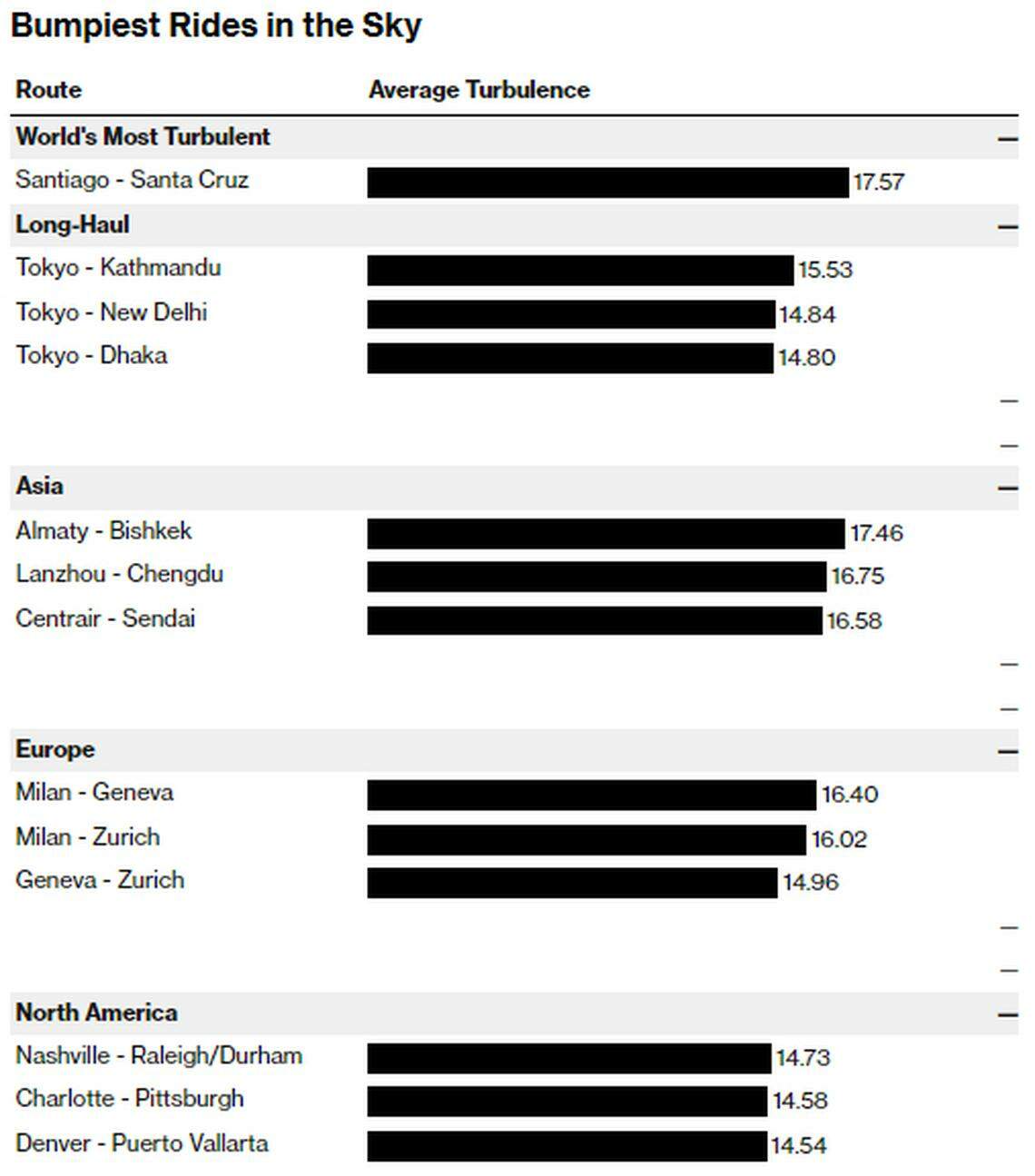A SERIES of incidents that left scores of airline passengers needing medical attention has shone a spotlight on the problem of severe in-flight turbulence.
In recent months, Singapore Airlines, Qatar Airways and Air Europa flights have all suffered sudden drops in altitude, requiring passengers to need hospital treatment and, in Singapore’s case, leaving one man dead.
Singapore Air Flight SQ321 encountered severe turbulence as it entered Thai airspace in late May, triggering an emergency landing in Bangkok. It was en route to Singapore from London.
And this week, some 40 passengers were injured when an Air Europa flight hit severe turbulence on its way from Madrid to Montevideo, Uruguay.
While the most turbulent flights of all connect Santiago in Chile to Santa Cruz in Bolivia, there are similarly bumpy rides across the world, according to the turbli database. Flights leaving Tokyo dominate the list of the roughest long-haul services.
Strong turbulence is produced when air streams travelling at significantly different speeds come together. This is typically encountered at the boundaries of jet streams, over mountains and in certain cloud storms, according to the turbli website.
A NEWSLETTER FOR YOU

Friday, 2 pm
Lifestyle
Our picks of the latest dining, travel and leisure options to treat yourself.
For instance, turbulence on the Santiago-Santa Cruz route is generated by winds from the Pacific Ocean to the Atlantic Ocean flowing almost perpendicular to the Andes. The equator is also a well-known region for turbulence because of strong upward currents and thunderstorm activity, turbli said. Japan has high levels of mountain- and ocean-induced turbulence.
The turbli website produced its rankings by analysing 150,000 routes using data from United Kingdom and United States government meteorological agencies. BLOOMBERG








